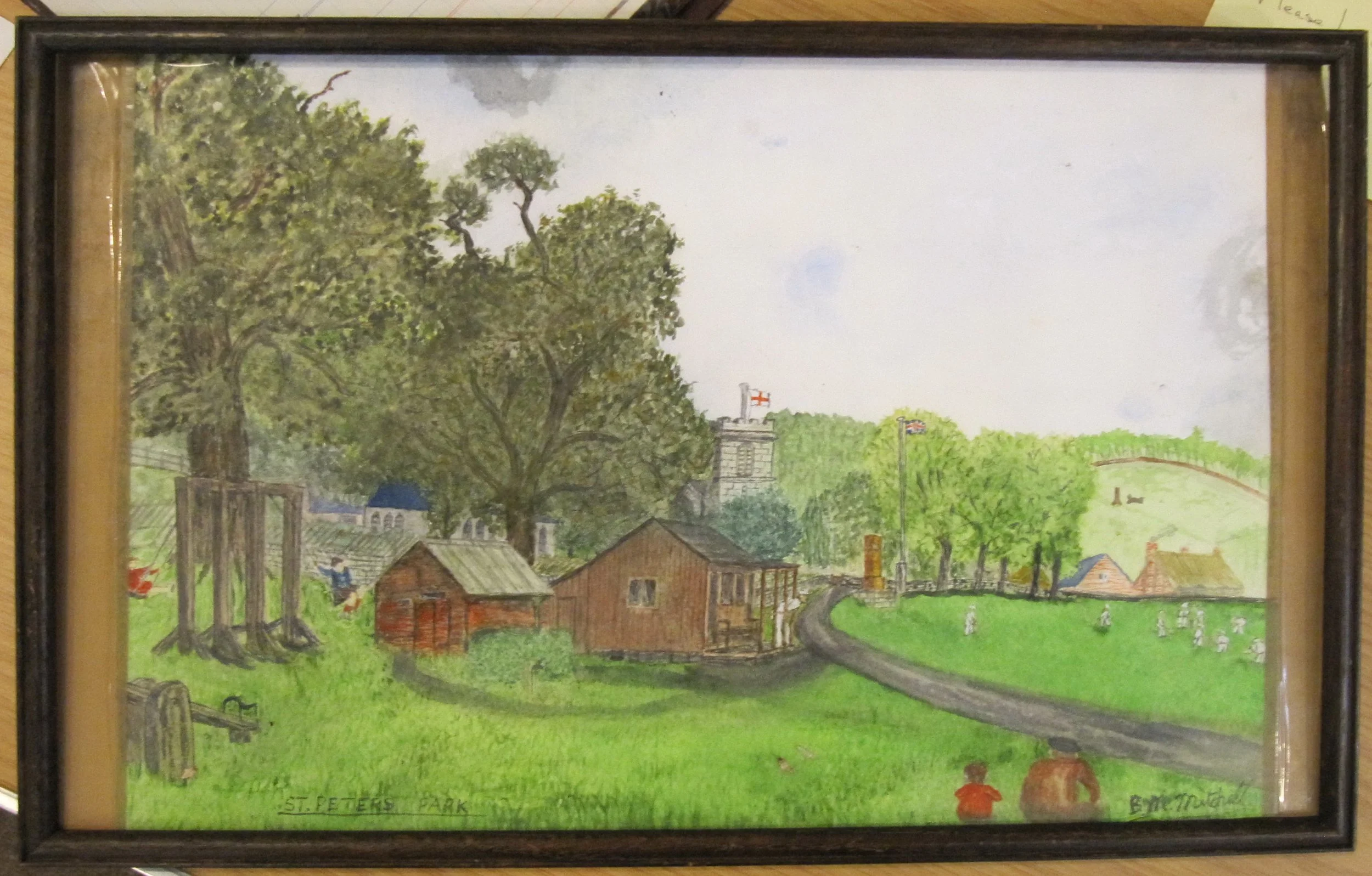
The paintings of Morris Mitchell
Little Eaton scenes
Morris Mitchell was a builder by trade and a resident in the village for many years. He died in 2021 at the ripe old age of 102.
Morris was also a talented artist and in his spare moments he painted a number of scenes from around the village.
Examples of his work are displayed here.
This picture is labelled “The Cobblers Shop” and is dated 1929.
The shop was run by Mr Jackson from a very small stone shed half way down the north side of Station road, next to Vickers Row.
This was a farmhouse on Station Road known as “Vickers Row”. The farmers (The Vickers family followed by Henry Redfern) had a few cows and sold milk direct to people in the village.
This is the Station in 1932, before it was closed for passenger traffic. The line remained open for coal trains until 1998. There are now plans to open the old railway line as a bridleway.
This is the Independent Chapel, now the United Reformed Church on Alfreton Road to the south of the village.
Built in 1843 for non-conformists, this was known as “bottom chapel” (“Top Chapel” was the Methodist Chapel to the north of Alfreton Road)
The distinctive lantern roof was removed in the 1970s, following damage to the front when a milk lorry crashed into it.
This was “The Brook Mill”, opened by the Tempest family in 1850s as a paper mill. It was sold in 1880 to the Cudlip family and there was a serious fire in 1888. It passed to the Dowding family in 1906 and made bags for the sugar industry. The business was sold again in 1958 but failed in the 1970s and many of the buildings, including the chimney, were demolished. The present industrial units are called “Old Mill Industrial Estate” and were set up in the remaining buildings.
These cottages were built for workers at Brook Mill in the 1800s. The buildings stood at the end of Station Road, opposite Elms Farm.
Many of the workers were Scottish and the terrace became known as “Scotch Row”. The cottages were demolished in the 1950s.
This is the old pavilion on St Peter’s Park. The park was purchased from the Strutts in 1902 with a bequest from Thomas Bates. The wooden pavilion was replaced in 1966 by the existing village Hall, which was extended further in 2010.
The Clock House was a major village landmark before it was surrounded by the industrial estate in the 1970s. It was built in 1795 by the Derby Canal Company to house the canal agents and their families. Its clock was the only one in the village for over 100 years until the school added a clock to celebrate Queen Victoria’s jubilee in 1897.
Here is a picture of the canal which was built in 1798 . It was linked to a gangway which carried horse drawn wagons of coal and pottery from Kilburn and Denby and stone from quarries in the village to Derby and beyond. The gangway and canal were closed in 1908.
Read full details of the history of the canal, the Clock House and the gangway
This building was originally an inn called “The King’s Head”. The Inn closed in the mid 1800s but the building continued as a general shop run by the Pratt family and then a greengrocers run by Fred and Eugena Marshall.
The building was demolished in the 1950s and replaced by the existing Chemist’s shop and houses.
To the right of this picture is a butcher’s shop run by the Thums family – now part of Church Farm. To the left is a barn which was then part of Brook Hollow farm, with this barn run as a joiner’s workshop which specialised in making coffins. Directly ahead lies Vicker’s Row (now demolished) with its distinctive “cruck” roof
This painting depicts Campwood Cottages, which still stand today on Alfreton Road opposite New Inn Lane.












